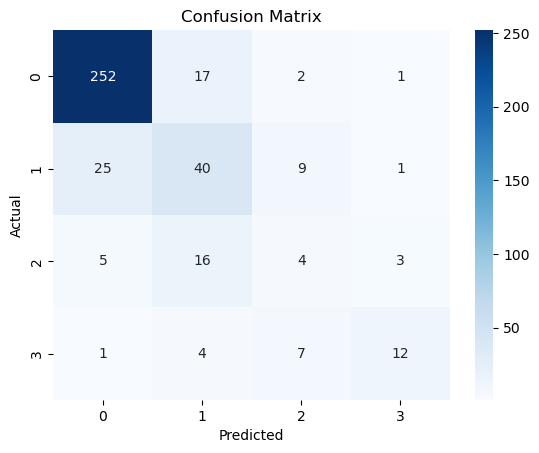- by Jimmy Fisher
- Oct 19, 2024
Odds Ratios
- By Jimmy Fisher
- Oct 19, 2024
- in Definitions

I previously summarized the difference between odds and probability, but it is worth digging more deeply into odds ratios (ORs) and their practical applications.
In part, this is because of their utility in statistical analysis. With ORs, we can compare different groups, assessing the relative prevalence of diseases, treatments, and outcomes across groups. One example of this provided in the table below, an output from an analysis on Long COVID as reported by 38,261 Behavioral Risk Factor Surveillance System (BRFSS) survey respondents. Definitions of "Long COVID" vary widely, especially globally, but basically it's long-lasting effects from COVID infection.
Take a look at the OR (odds ratio) column, second from the right. The dashes indicate the reference category for the other rows in that variable group.
Here are a few examples of how to interpret the OR column of this table:
- Number of COVID Vaccines (3 or more vs. 0): The OR for individuals with three or more COVID vaccines (compared to those with none) is 0.679. This means that those with three or more vaccines have 32.1% lower odds of reporting Long COVID compared to those who are unvaccinated, suggesting a protective effect of vaccination.
- Age (45–64 vs. 18–44): The OR for individuals aged 45–64 (compared to those aged 18–44) is 1.119. This indicates that people aged 45–64 have approximately 11.9% higher odds of reporting Long COVID than younger adults (18–44).
- Sex (Female vs. Male): The OR for females (compared to males) is 1.723. This suggests that females have about 72.3% higher odds of reporting Long COVID compared to males, indicating a possible sex-based difference in Long COVID prevalence.
- BMI (Obese vs. Normal): The OR for individuals with obesity (compared to those with normal BMI) is 1.484. This means that obese individuals have 48.4% higher odds of reporting Long COVID compared to those with a normal BMI, suggesting an increased risk of Long COVID among individuals with obesity.
These findings highlight key risk factors and protective measures for Long COVID, suggesting that vaccination, BMI, age, and sex all contribute to individual likelihood of experiencing Long COVID (or, more technically, reporting protracted symptoms on the BRFSS survey).
Understanding how to construct and assess ORs empowers researchers and clinicians to quantify relationships between risk factors and health outcomes, enabling more informed decisions in public health and clinical practice.





